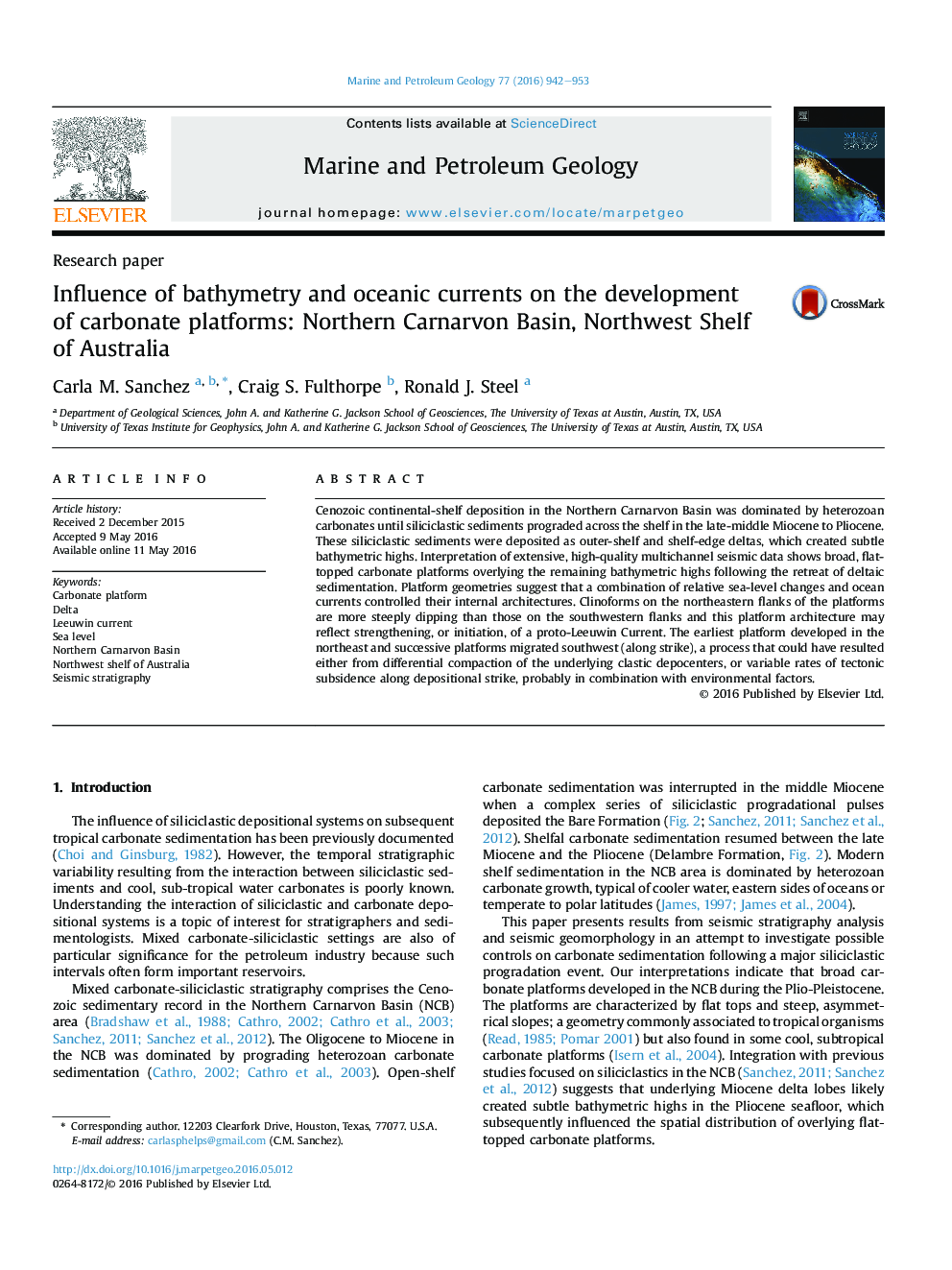| Article ID | Journal | Published Year | Pages | File Type |
|---|---|---|---|---|
| 6434642 | Marine and Petroleum Geology | 2016 | 12 Pages |
â¢Flat-topped carbonate platforms occur within the Plio-Pleistocene section of the Northern Carnarvon Basin.â¢Preexisting deltas controlled the location of the overlying carbonate platforms.â¢The ancestral Leeuwin Current was likely active during growth of these platforms.
Cenozoic continental-shelf deposition in the Northern Carnarvon Basin was dominated by heterozoan carbonates until siliciclastic sediments prograded across the shelf in the late-middle Miocene to Pliocene. These siliciclastic sediments were deposited as outer-shelf and shelf-edge deltas, which created subtle bathymetric highs. Interpretation of extensive, high-quality multichannel seismic data shows broad, flat-topped carbonate platforms overlying the remaining bathymetric highs following the retreat of deltaic sedimentation. Platform geometries suggest that a combination of relative sea-level changes and ocean currents controlled their internal architectures. Clinoforms on the northeastern flanks of the platforms are more steeply dipping than those on the southwestern flanks and this platform architecture may reflect strengthening, or initiation, of a proto-Leeuwin Current. The earliest platform developed in the northeast and successive platforms migrated southwest (along strike), a process that could have resulted either from differential compaction of the underlying clastic depocenters, or variable rates of tectonic subsidence along depositional strike, probably in combination with environmental factors.
